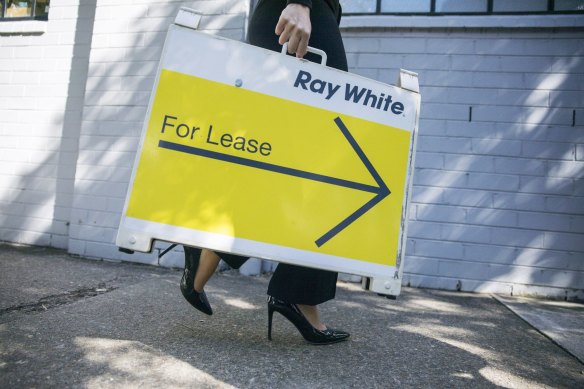The Victorian suburbs where landlords haven’t been able to raise rents
Tenants hoping to find cheaper rents would have to move to Melbourne’s outer suburbs or Victoria’s regions to lease a house for less than it cost a year ago.
While the rest of Melbourne recorded strong rental growth, just four suburbs across Melbourne and the Mornington Peninsula and a handful of towns across Victoria’s regions had modest rent declines in the 12 months to June.
Venus Bay and Myrtleford fell by 5 per cent and 4.2 per cent respectively, the Domain Rent Report for the June quarter revealed. Patterson Lakes, in Melbourne’s south-east, experienced a meagre annual fall of 0.7 per cent.
In Sorrento, the median asking rent has dropped by 17.2 per cent to $700 a week.
Quantify Strategic Insights head of data and insights Angie Zigomanis said rising rents in Melbourne’s inner and middle suburbs have caused some tenants to compromise on their living situations, whether that means moving back in with parents, living with house mates or looking further afield for a rental within their budget.
Zigomanis said while an influx in overseas migration has pushed up rents across the inner and middle suburbs, the post-lockdown exodus from the regions has contributed to softening rents outside of metro Melbourne.
“Those pressures in the regions that were there a couple years ago aren’t as intense as they were before,” he said.
Zigomanis added that holiday homes in areas like Sorrento and Safety Beach may have been put on the rental market to help generate extra income for homeowners struggling to pay their mortgage.
“It might well be that some of these properties that were completely held as holiday homes are actually finding their way onto the rental market because the owners need to generate income,” he said.
Buxton Mornington Peninsula agent and auctioneer Clayton Smith told The Age he had seen more holiday homes put up for rent, causing supply in holiday destinations like Sorrento to outstrip demand for long-term rental properties.

Just 11 suburbs across Victoria recorded rent falls in the last year.
“Land tax is part of it. There are a few people that own a house down here, who historically wouldn’t have offered their home for rent, but are just trying to claw back some of the expense ... there’s a bit of oversupply,” he said.
Smith said rent prices in Sorrento are only now starting to return to normal following a boom during the pandemic.
“I’d argue it perhaps went up further than some of the other suburbs and so now it has eased. It’s probably that factor of it went up a bit harder, and it’s now found its level.”
Smith said that while there are now more permanent residents calling Sorrento home than five years ago, workers and families are opting to live in Peninsula suburbs closer to Melbourne and with better access to employment opportunities, hospitals and schools.
“If you look to Mornington, Mount Martha, Mount Eliza you might have seen (rent) increases. Obviously, there’s better access to employment and hospitals ... proximity to employment definitely is a factor,” he said.
Head of property management at Buxton Highton Suzi Gudasic said rent prices have steadied in areas like Waurn Ponds after landlords increased prices following the pandemic rent freeze.
“(Rents) went up quite heavily across the board because there was a lack of properties and people were desperate, and owners could put basically whatever price they wanted,” Gudasic said.
Waurn Ponds median weekly asking rents fell by 1.9 per cent in the 12 months to June.
Gudasic said while houses were being snapped up by renters in Waurn Ponds, where prices are slightly lower than in neighbouring suburbs Geelong and Highton, there was an oversupply of student accommodation which has been slow to lease.
“We don’t really have anything for lease apart from rooming houses, which are a bit hard to move at the moment. But houses, if they’re priced right, they’re moving well.”
Senior economist at the Australia Institute Matt Grudnoff said the low number of suburbs which had rent declines highlighted the lack of affordability across Melbourne’s rental market.
Grudnoff said while rents may have softened in some regional towns, it didn’t necessarily mean they offered affordable rental properties.
Grudnoff said rent rises were especially hurting young professionals, with many turning to shared housing or moving further away to find a rental within their budget.
“That’s happening across Australia increasingly as we see rents rise. We also need to remember that the biggest single contributor to the consumer price index, our main measure of inflation, is the increase in rents over the last 12 months.”